14 Ducks With Yellow Bills (With Pictures)
Among the many duck species, ducks with yellow bills hold a special charm for bird enthusiasts. The warm, golden hue of their bills stands out beautifully against their varied plumage—whether it’s the glossy green head of a Mallard or the soft brown tones of a Mottled Duck. This distinctive feature doesn’t just make them easy to spot on ponds and wetlands; it also plays a role in their identity, mating appeal, and even foraging habits.
What makes these ducks particularly fascinating is that the color of their bills can reveal subtle clues about their age, sex, and sometimes even their health. In certain species, bright yellow bills are a sign of a healthy male ready to attract a mate, while in others, subtle color variations help distinguish them from close relatives or hybrids.
Let’s explore some of the most common ducks with yellow bills to learn more about their appearance, behaviors, habitats, and other fun facts.
1. Yellow-billed Duck
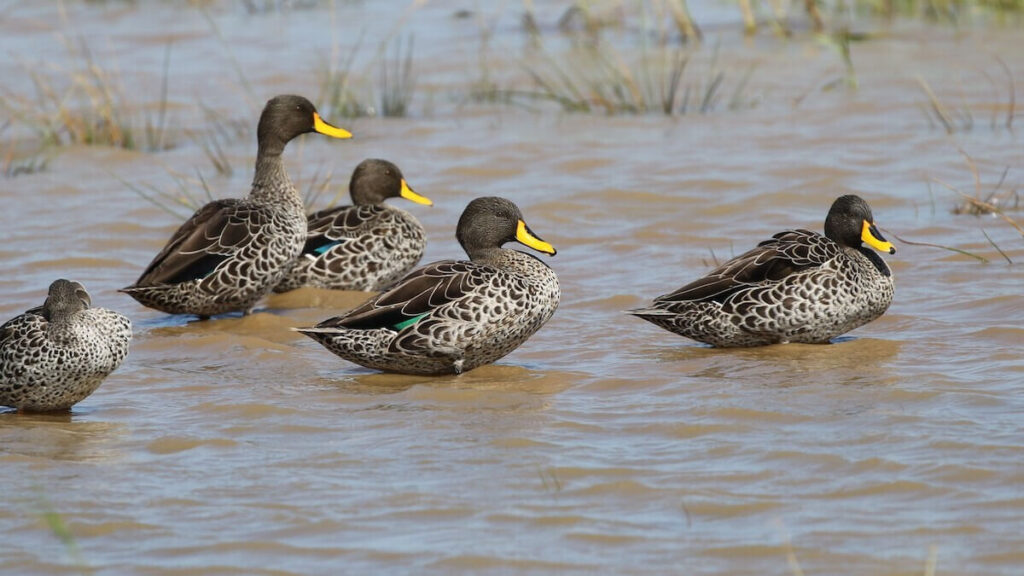
For any avid duck enthusiast, the first species that likely comes to mind when thinking of ducks with yellow bills is the Yellow-billed Duck — and the name itself is a subtle hint. Its dark head makes the yellow stand out beautifully, almost as if it’s glowing. When it spreads its wings, you might notice a lovely green patch with a white border — that’s called the speculum.
These ducks love freshwater areas such as lakes, dams, and marshes, where they feed by gently dabbling at the surface, mostly in the evenings or at night. They make their nests in thick grass close to water, where the female lays around six to twelve eggs. If you listen closely, you might hear the male’s soft, whistling call, or the female’s familiar quack that sounds a lot like a Mallard.
There are two kinds — one found more in the north with a brighter bill and blue wing patch, and another in the south with slightly duller colors. Sadly, in some areas, these ducks are threatened by mixing with feral Mallards, which can change their pure wild genes over time.
2. Mallard
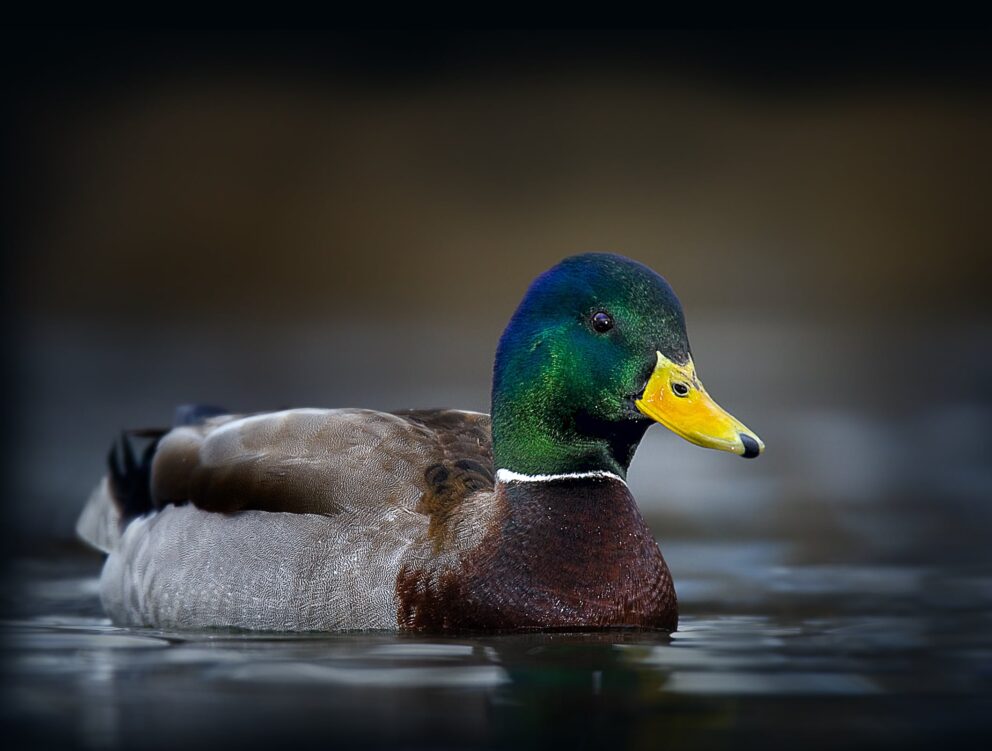
One of the most well-known ducks in the world, the Mallard is easy to recognize — especially the male with his shiny green head and bright yellow bill. The female looks different, wearing soft brown feathers that help her blend in while nesting. Both have a patch of blue or purple on their wings called a speculum, edged neatly in white.
Mallards are found almost everywhere — ponds, rivers, city parks, and even farm dams. They’re friendly, adaptable, and quite used to being around people. The female usually lays a big clutch of eggs, and the ducklings are quick to swim and explore soon after hatching.
Mallards are also the ancestors of most domestic duck breeds. However, because they sometimes breed with other wild ducks, they can cause genetic mixing that threatens the purity of native species. Still, they remain one of the most familiar and beloved ducks to birdwatchers around the world.
3. Pekin Duck
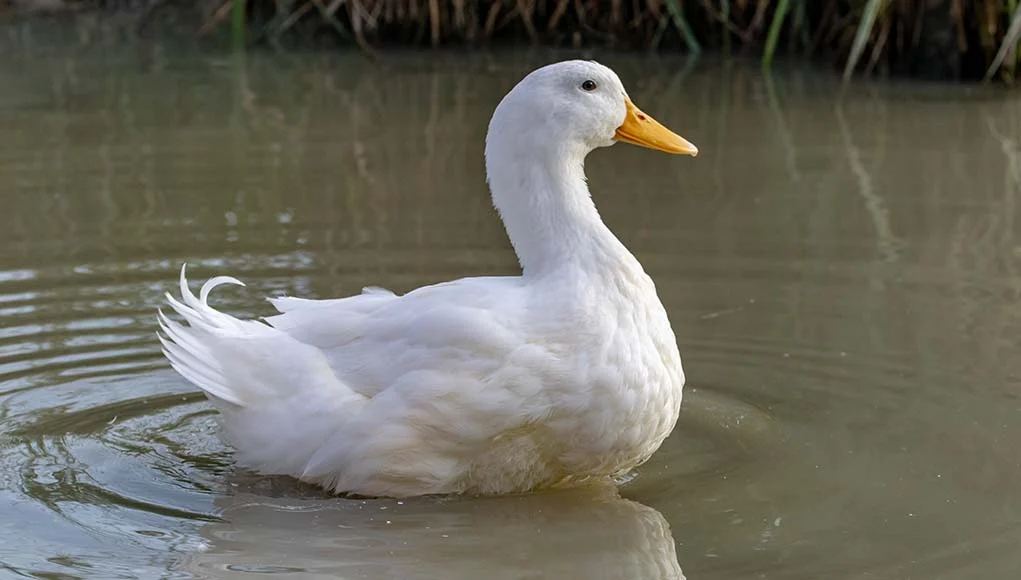
The Pekin Duck, often called the American Pekin, is a large, white domestic duck with a cheerful look and a bright yellow bill. Its orange-yellow legs and creamy feathers make it look like the classic “cartoon duck” many people picture when they think of ducks.
Originally brought from China to the United States in the 1800s, the Pekin quickly became popular for its size and calm nature. It’s mostly kept on farms for meat, but you’ll also find it in parks and homesteads as a friendly pet. With its upright posture and rounded head, it has a gentle, confident presence.
Even though Pekins don’t fly much, they’re lively swimmers and have a pleasant, mild quack. Their bright yellow bills add to their charm, making them stand out beautifully against their white feathers — a true favorite among duck lovers everywhere.
4. Magpie Duck
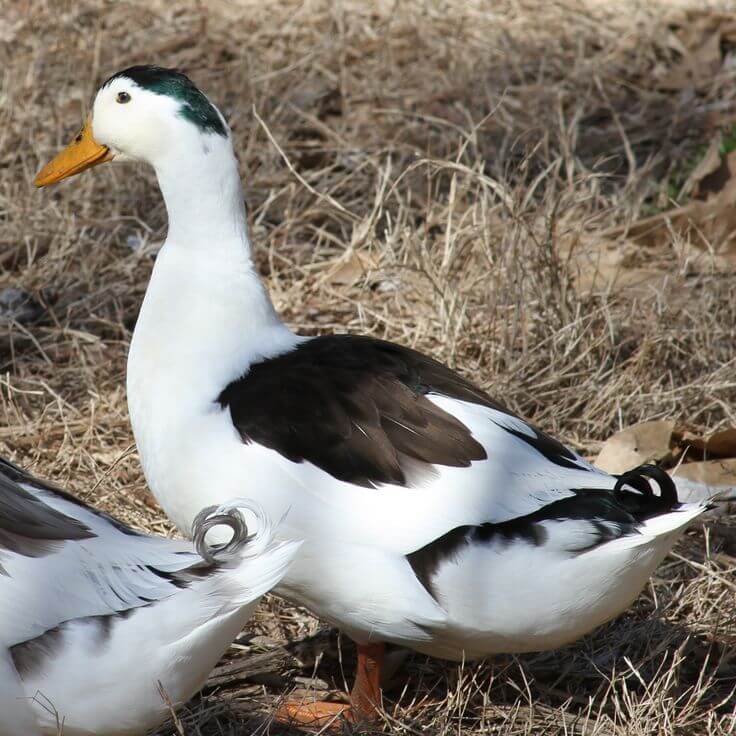
The Magpie Duck is a charming British breed easily recognized by its black and white feathers that look a lot like the markings of a magpie bird. What really catches the eye, though, is its yellow bill, which starts out bright in young ducks and may turn a greenish shade as they grow older.
Magpie Ducks are medium-sized with a long neck and a proud, upright posture. When you see one standing still, you can often spot a heart-shaped patch of black across its back when its wings are folded. Some even come in other color patterns, such as blue-and-white or chocolate-and-white, but the bill’s soft yellow tone is always part of their charm.
These ducks are not just pretty — they’re also great egg layers and known for their calm, friendly behavior. Whether on a small farm or a backyard pond, Magpie Ducks add both beauty and personality to their surroundings, especially when that yellow bill gleams in the sunlight.
5. Mottled Duck
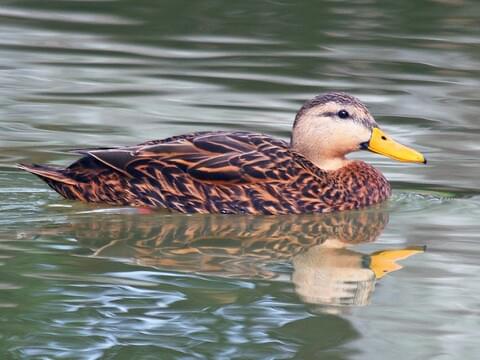
The Mottled Duck is a handsome bird that looks a lot like a female Mallard, but a little darker overall. The male stands out with his bright yellow bill, while the female’s is more orange with a few dark markings around the edges. This color difference is one of the easiest ways to tell them apart.
These ducks are mostly found along the Gulf of Mexico, where they live year-round instead of migrating. Their warm brown feathers, green-blue wing patch, and glowing yellow bill make them a joy to spot near coastal marshes or quiet wetlands.
Because they’re often seen in pairs or small groups, birdwatchers find them quite endearing. They share the same friendly quacks and dabbling habits as Mallards but have their own subtle beauty that makes them special among North America’s native ducks.
6. American Black Duck
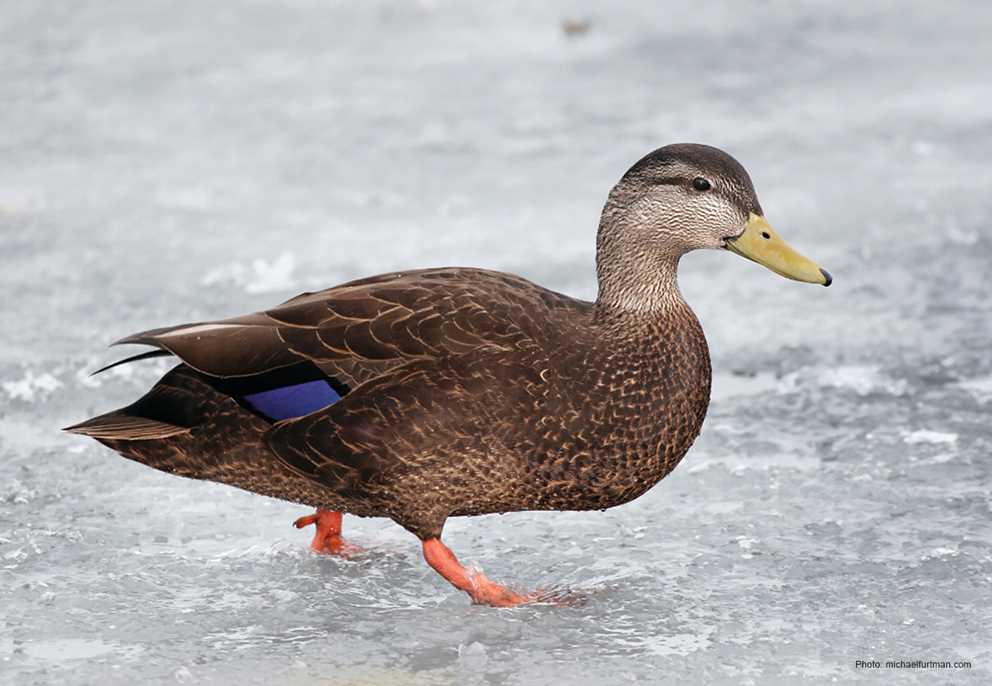
At first glance, the American Black Duck might seem all dark brown, but take a closer look and you’ll notice the male’s yellow bill, which shines brightly against his chocolate-colored feathers. The female has a duller, greenish bill marked with darker streaks.
This duck looks a bit like a Mallard but with deeper, richer colors. When it spreads its wings, you’ll see a lovely violet-blue patch called a speculum, edged with black rather than white. They often paddle quietly through marshes, ponds, and estuaries, blending perfectly into their shadowy surroundings.
American Black Ducks are strong, graceful flyers and are often heard giving the familiar “quack” we all know.
7. Buff Orpington Duck
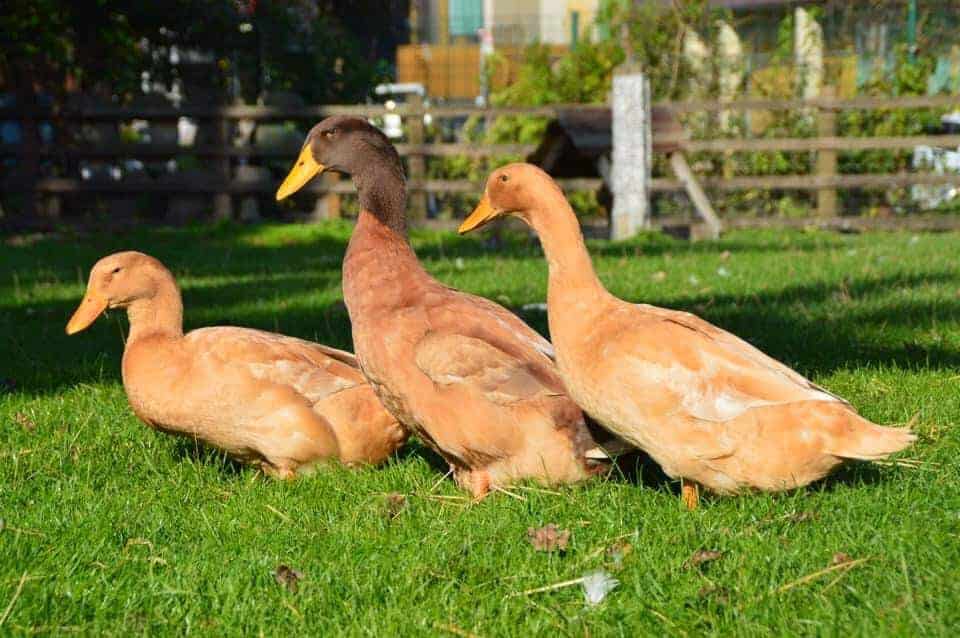
The Buff Orpington Duck is a lovely light-colored breed that shines with its soft, golden-buff feathers and gentle nature. It’s a medium-sized duck with a rounded body, a smooth neck, and a friendly look that makes it a favorite among duck keepers. One of its most charming features is its yellow bill, especially bright in the males, while females have a warmer orange-brown shade.
Their orange legs and calm temper make them look as sunny as their personalities. Buff Orpingtons were bred in England and are known for being both good egg layers and pleasant companions. They carry themselves gracefully, with their bodies tilted slightly forward as they walk or waddle across the grass.
8. Falkland Steamer Duck
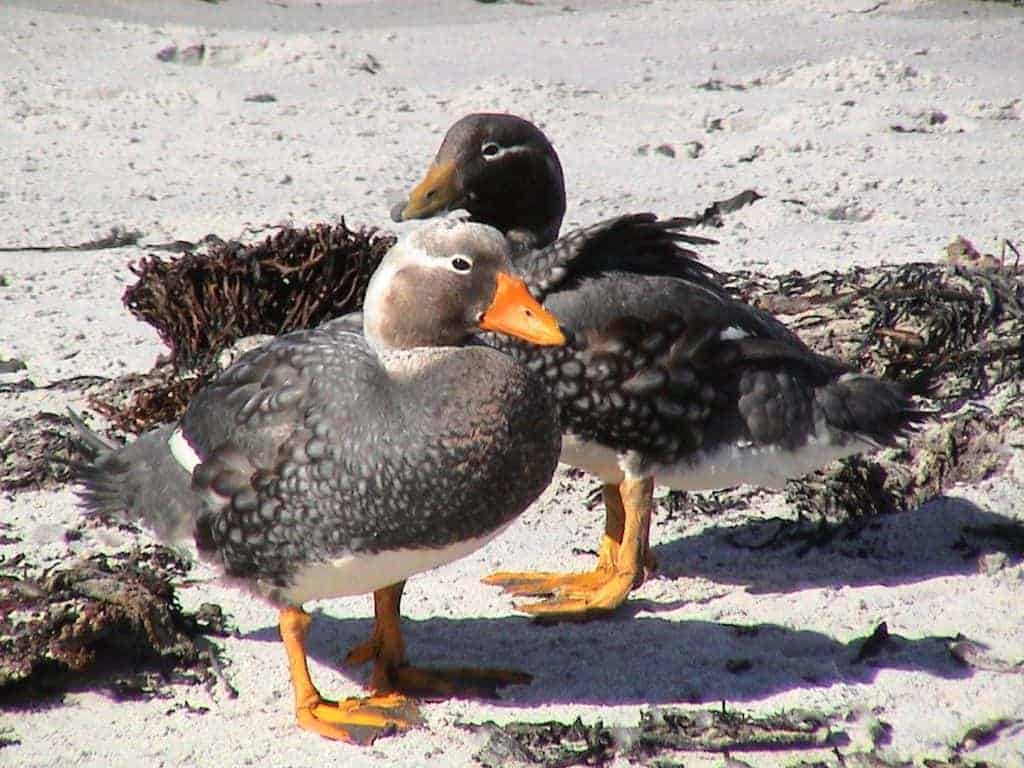
The Falkland Steamer Duck is a fascinating, flightless bird found only in the Falkland Islands. It gets its name from the way it “steams” across the water — flapping its wings and feet at the same time, just like the paddles of an old steamboat!
The male has a bright orange-yellow bill that stands out against his soft gray feathers, while the female’s bill is a darker olive green. Both have strong, orange-yellow feet built for swimming and walking along the rocky coastlines. Though they can’t fly, these ducks are powerful swimmers and very protective of their nesting areas.
9. Black Scoter
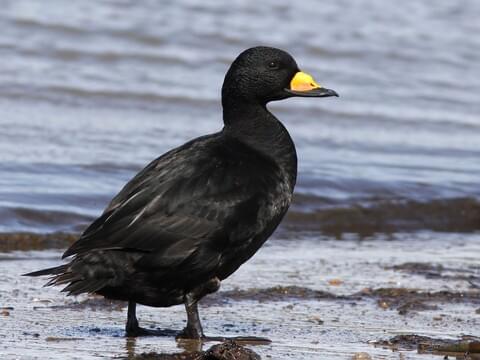
The Black Scoter is a striking sea duck known for its smooth, rounded shape and the male’s all-black plumage. What makes him stand out most is his bulbous yellow bill, which looks like a bright patch of sunlight against his dark feathers. The female, in contrast, is brown with pale cheeks, blending in perfectly with the waves and sea spray.
These ducks prefer cold northern seas and are often seen diving for shellfish and small crustaceans. If you’re lucky enough to spot a flock of them bobbing offshore, the males’ glowing yellow bills almost look like golden dots dancing on the water.
10. Northern ‘Borealis’ Eider
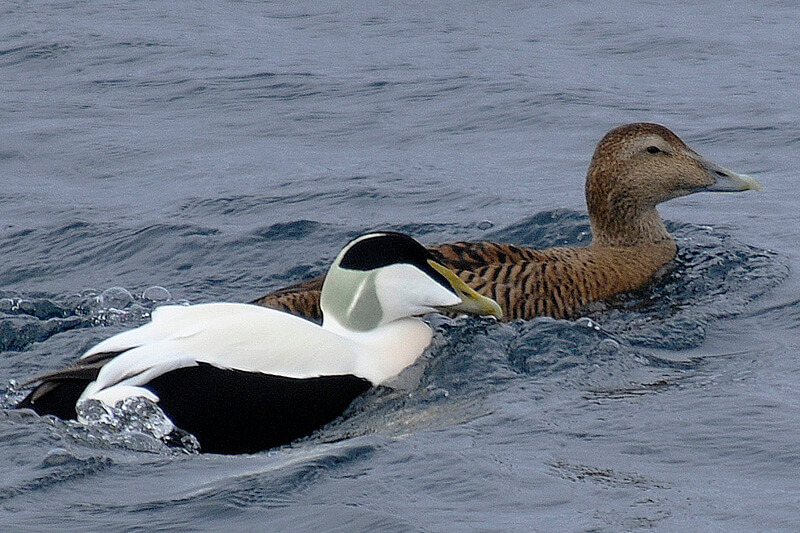
The Northern, or Borealis, Eider is a special subspecies of the Common Eider, a large sea duck known for its beautiful plumage and soft down. Males have a bold black-and-white pattern and a yellow to orange bill, which becomes brighter during the breeding season. Females are brown and well-camouflaged, helping them stay hidden while nesting along rocky northern shores.
These eiders are strong, hardy ducks that thrive in cold coastal waters. They dive deep for food, mainly clams and mussels, and form large, impressive flocks in winter.
11. Spot-billed Duck
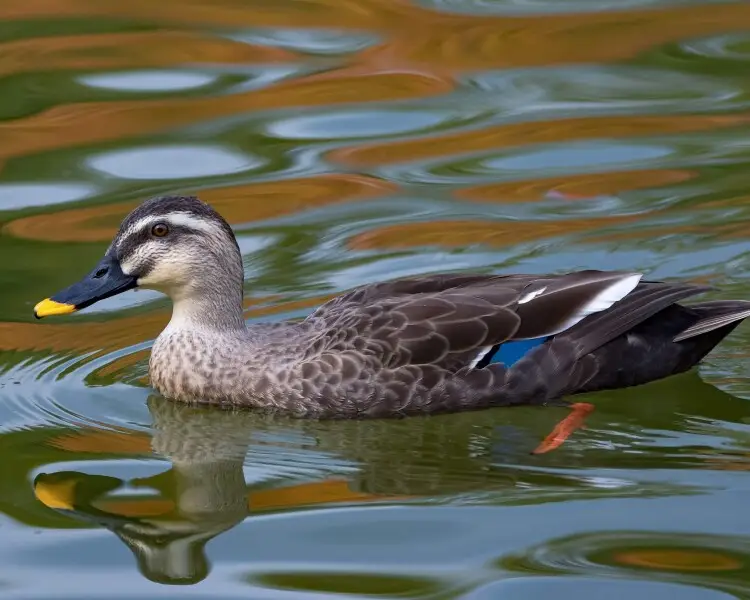
The Spot-billed Duck is a beautiful dabbling duck found across the wetlands of Asia. Its most noticeable feature is its black bill with a bright yellow tip, giving it a spotted or “dipped in paint” look. Males often have a small red spot near the base of the bill, which the females usually lack.
These ducks are mainly grey with lighter heads and a lovely green patch, called a speculum, on their wings bordered with white. They have bright orange legs and are often seen calmly paddling through ponds, lakes, and rice fields. Spot-billed Ducks are non-migratory and stay close to freshwater habitats year-round, often moving in pairs or family groups. T
12. Mexican Duck
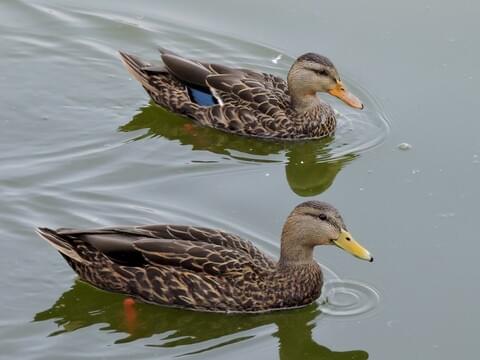
The Mexican Duck is a calm, medium-sized duck found in Mexico and parts of the southwestern United States. At first glance, it looks a lot like a female mallard — brown with a blue patch, called a speculum, on the wings. But look closer, and you’ll spot one big difference: the male Mexican Duck has a bright yellow bill, while the female’s is duller and more olive-colored.
These ducks love shallow lakes, ponds, and marshes, where they dabble for seeds, insects, and small plants. They tend to stay close to fresh water and often blend in with other wild ducks, which sometimes makes identification tricky.
13. Yellow-billed Teal
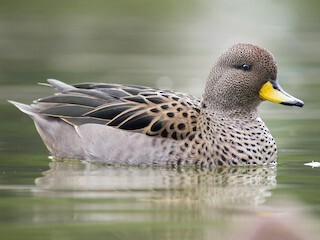
The Yellow-billed Teal is a small and lively duck found across much of South America, from Argentina and Chile up to Peru and Bolivia. It’s easy to recognize once you see its bright yellow bill with a black tip and a black stripe running along the top — a cheerful splash of color that gives this bird its name.
This teal prefers calm freshwater wetlands where it can paddle about, filtering seeds and small creatures from the water. Its body is soft gray-brown with a darker head, giving it a neat and tidy look. Yellow-billed Teals are often seen in pairs or small flocks, zipping across the water or resting quietly among reeds.
14. Female Barrow’s Goldeneye
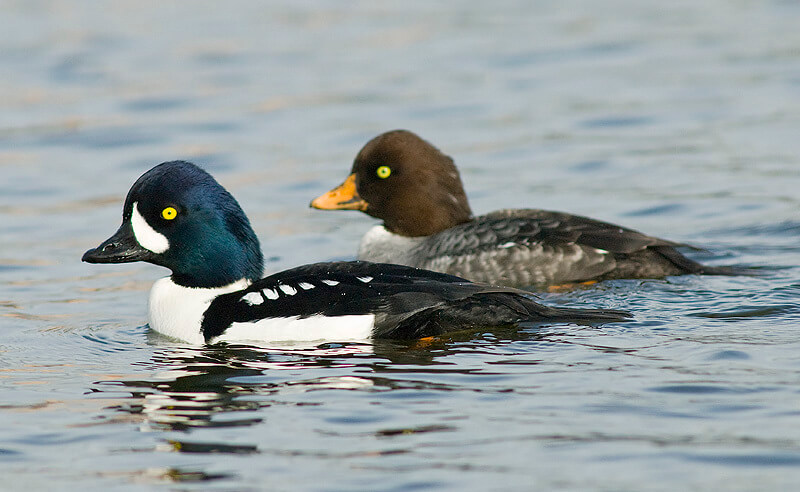
The Female Barrow’s Goldeneye may look quite similar to her Common Goldeneye cousin, but she can be told apart by her mostly yellow bill — not just the tip. Her head is rounder, too, and her overall look a bit sleeker. The combination of her deep brown head, soft gray body, and sunny bill makes her stand out among northern diving ducks.
She spends much of her time in clear mountain lakes and cold coastal waters, diving skillfully for aquatic insects and crustaceans. The males are easy to recognize with their glossy purple heads and crescent-shaped white face patches, but the females have their own charm — that glowing yellow bill gives them a touch of brightness in any flock.
